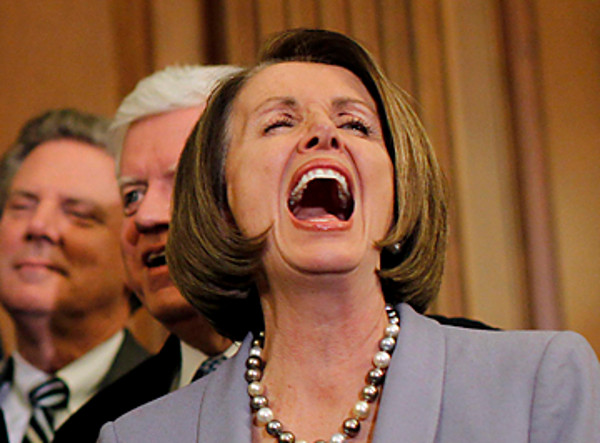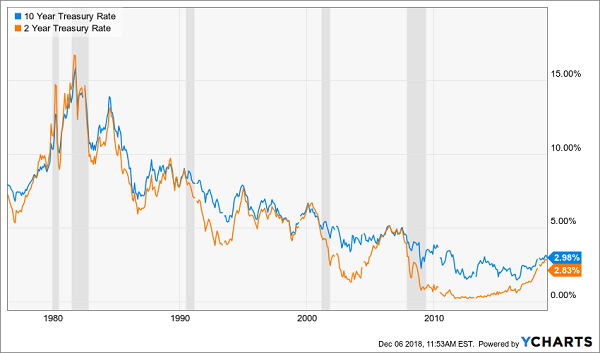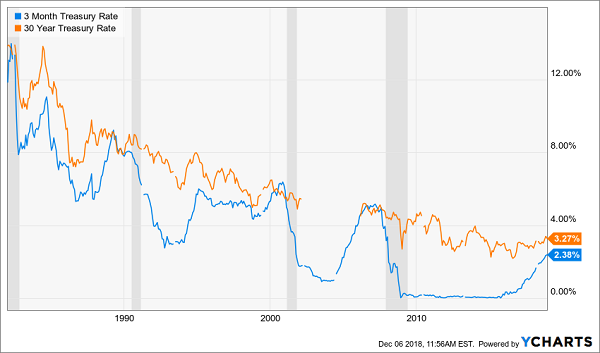Another "most important election in our lifetimes" has come and gone. I've seen many of them over the years and all of them have something in common — politicians using Social Security to scare the people. This one was no different, with Democrats claiming that Republicans are going to cut Social Security.
Retired people are very concerned about what the government will do to Social Security payments. So, politicians love to use Social Security to get in office and stay in office.
What is the real truth about Social Security? I am going to tell you something you've probably never heard and never will hear if you listen only to the politicians and the mainstream propaganda media.
There are three sides to Social Security. They are: the government, those who pay in (producers), and those who receive payments (consumers). All three have a different perspective and different goals.
First, let's start with the government. The U.S. government has a serious problem with Social Security, and I hasten to add that the problem is not funding Social Security. Social Security is not funded, it has no trust fund, and it will never be funded. Government payments to Social Security recipients are no different from government payments for anything else. The government simply sends computer symbols to your checking account. You then spend the numbers by writing them on a paper check or swiping your debit card and passing them to somebody else. You don't have any money, only imaginary numbers called money.
Just about anybody you talk to is worried that Social Security will go broke. Let's settle this nonsense once and for all. The only possible way to go broke is to have substance as money — such as silver and gold — and spend it all with no way to get any more. We just agreed that money is only numbers which represent absolutely nothing. How can the government run out of numbers? They can create numbers until the end of time.
So, what is the serious problem that government has with Social Security? Government is concerned with the exponential growth of the retirement population. Our economic system will collapse if our population gets too top-heavy with nonproducing consumers. Take my word for it, only so much consumption can be allowed by nonproducing, consuming retired people.
Modern governments are very sensitive about consumption. The reason behind it is simple. Government is the biggest consumer of all. In some poverty-stricken Third World countries governments have already consumed all the national wealth, so there is no one left to produce and no one to buy if anything is produced.
The bottom line is that government will not, under any circumstance, let the Social Security system out-consume the government and the productive capacity of the country. Production must balance consumption. Since only so much can be produced, then it follows that only so much can be consumed. Consumption must be regulated, and this is the problem.
What will the government do? The government long ago started taxing Social Security. What does taxing do? Well, the American people believe that their taxes support the government. This is absolutely not true. Taxes of any kind have nothing to do with supporting the federal government. The federal government creates money through the central bank, AKA the Federal Reserve.
Remember the numbers we discussed above? Taxing is very important because it is a process of taking some of the numbers back. Taxes control consumption. When the government taxes your income or Social Security, it is cutting your consumption. The more government taxes the more it reduces consumption. The more the government consumes, the less it will allow the people to consume. So, government consumption goes up and your taxes go up to cut more of your consumption.
Remember, there cannot be more consumption than production, and the government is certainly not going to cut its consumption. If anything, it will just increase. So, you can expect that the government will tax Social Security more and more. You will hear political rumblings about taking Social Security away from people "who can afford to do without it," also known in political parlance as "the rich." This discrimination will be expanded. Next those "more fortunate" who have made the extra effort in life will be taxed more or denied altogether what they have paid in.
Consumption by the retired population will be cut and cut massively. The government will do what it has always done. It will engage in class warfare. It will play the "have-nots" against the "haves," those who have worked hard and saved. If you understand the philosophy of government and if you understand the economic system, what we have just said is easy to predict. You can count on it.
The cuts will come outright, or through some fabricated national emergency and in other devious ways. But they will come as the monstrous government consumes the national wealth. And it will come regardless of whether your politician is a "D" or an "R."
Another way Social Security consumption will be cut will be by raising the age for which people become eligible for Social Security, as is already being done. When Social Security began, people could receive benefits at age 65. But in 1935, when Social Security was created, the average life expectancy was 60 years for men and 64 for women. This means far more people were paying in (producing) than were receiving benefits (consuming). Many producers never saw a dime of their money. This is what government prefers because it allows it to consume more.
Now the life expectancy is 76 for men and 81 for women. So, consumption is beginning to far outpace production. Raising the age at which benefits are available forces producers to be producers longer and delays their ability to retire and become consumers.
So, the Social Security crisis has absolutely nothing to do with funding. From the government and the politicians viewpoint, the problem is how to reverse consumption from the fast-growing, nonproducing consuming people who get Social Security.
Also, the welfare medical system is now consuming far more than will be allowed in the future. The propaganda mills are already grinding about waste and inefficiency in the medical industry, and laws will be passed to cut Medicare and restrict treatment options.
Retired people will have to pay for more and more of their medical expenses, and some will become unavailable based on age and health status (death panels).
Any time the government and the politicians "regulate" your consumption with new income taxes or Social Security taxes, their purpose is to increase government consumption. It does not matter which politicians are in power. This is the philosophy and the plan of modern governments that create money through central banks.
|
Thursday, December 27, 2018
The Truth about Social Security
By Bob Livingston
Monday, December 10, 2018
How Democrats have become the party of vote fraud and stolen democracy
How Democrats have become the party of vote fraud and stolen democracy
Wednesday, November 14, 2018 by: Mike Adams
Tags: ballots, corruption, deception, democrats, election fraud, elections, fraud, vote fraud
Tags: ballots, corruption, deception, democrats, election fraud, elections, fraud, vote fraud
1,780VIEWS

(Natural News) The Democrats are now the party of vote fraud, and they have already stolen over a dozen House seats and at least one Senate seat. They’re still working to try to steal Florida through a massive “ballot factory” operation that continues to operate in blatant violation of both state and federal law.
Yet no one is stopping the Democrats from stealing elections.
The GOP still hasn’t figure out that Democrats will not voluntarily stop committing election fraud. They must be stopped by force (arrests).
While the GOP is playing by the rules, the lawless Left is cheating and thieving its way to electoral victory. And no one is being held accountable, which means the Dems have figured out they can do the exact same thing in 2020, too.
They are stealing our democracy, and they are getting away with it.
Hear my full podcast on this at Brighteon.com:
Read more at VoteFraud.news.

Sunday, December 9, 2018
The hidden warning in the 2018 midterms
On the surface, last week's midterm elections really weren't awful. Sure, the left picked up a House majority, but the president's party routinely loses ground in Congress in midterm elections. Hell, even President Ronald Reagan saw the GOP lose yardage in the 1982 and 1986 midterms. Granted, having to say, "Speaker of the House Nancy Pelosi" is like saying "Sure, I'll have seconds of the stewed beets," but at least that "Beto" clown got his walking papers. Besides, the GOP can stock the federal judiciary with competent judges while the House Democrats spend the next two years arguing over whose name goes first on the latest bill to impeach President Donald Trump. Indeed, far from the anticipated hemorrhage, last week was more like a bad paper cut. Sure, it stings, but it won't even require stitches.
But that's on the surface. Beneath the veneer of acceptable losses, the midterms offered a warning that the GOP had bloody well better take seriously. While the infection of liberalism is slowly spreading to cover nearly the entire East Coast, and has essentially destroyed the opposite shore, it appears to be metastasizing to far-flung regions of the American body. Senator Ted Cruz defeated "Beto," but he hardly stomped him flat, and O'Rourke's campaign taught the Democrats that they can use their control of the media in concert with a monster spending campaign to great effect.
In Arizona, voters gave John McCain's already-shaky Republican seat to far-left Democrat Kyrsten Sinema. The changing demographics in the desert turned their backs on badass A-10 pilot Rep. Martha McSally to embrace a liberal who spent half her campaign discussing how much she hated them.
Deep in the heart of Dixie, the Democrats, who haven't dominated the landscape since they still had real KKK members on their roster, made noticeable noise. Although Stacey Abrams didn't win, she made a hell of a splash. Again, a "red" state turned purple by fawning media coverage working hand-in-glove with liberal cash. Considering Abrams on her own was a gaffe-prone curiosity, it's fair to say that her success essentially means Oprah Winfrey almost bought a governor's mansion.
In Florida, Representative Ron DeSantis barely outpointed socialist Mayor Andrew Gillum of Tallahassee in a gubernatorial contest which involved little more than Gillum using the media to paint DeSantis — and anyone else who mentioned his appalling corruption — as racist. In the Sunshine State's Senate battle, Phil Scott edged incumbent Bill Nelson in a race which I doubt Scott could have won without his own foundation as governor.
It's worth noting that both Florida and Georgia face junior varsity versions of the disputed presidential election of 2000. Much like that farce, Abrams, Nelson and Gillum are all engaged in brazen attempts to "find" enough votes to steal victory from the jaws of defeat. Perhaps learning their lesson from Al Gore's famous faceplant, the trio are using a combination of celebrity money and media misinformation to manipulate the situation to their advantage. Facts about bogus votes and imaginary attempts at voter suppression have faded behind celebrity- and reporter-spouted half-truths, outright lies and tangential character attacks on the Republicans. They've even begun floating the idea of "House" and "Senate popular votes" as being proof of a need to reduce American elections to pure popularity contests.
While the Democrats came uncomfortably close to the winner's circles in places in which they would formerly have been also-rans, they produced winners deep in their liberal redoubts who would have been on the other side of the Iron Curtain during the Cold War. Much like the lukewarm leftists who are spreading like mold into places like Texas, Florida, Georgia, Arizona and Virginia, the ones at the heart of the infection will look for ways to escape their urban confines. Given their innate authoritarianism, their "by any means necessary" mantra is clearly more than a metaphor.
The GOP may have come out ahead of short-term expectations last week, but their long-term expectations may need some tempering. If they — and, more importantly, conservatives as a whole — don't get their acts together, the next close calls will go the opposite way.
— Ben Crystal
What’s the Deal with Yield?
|
Saturday, December 8, 2018
Don’t Let Confusion and Fear Block Promising Genetic Therapy Treatments
Don’t Let Confusion and Fear Block Promising Genetic Therapy Treatments
Originally published at Fox News Newt Gingrich

Over the past three decades, I have consistently spoken about the enormous potential of biomedical breakthroughs that could solve many of our pressing public challenges. Because of this potential, I have advocated for increased public funding of basic scientific research and reforms at the Food and Drug Administration to speed up the process by which new treatments are available to patients.
One of the most exciting areas of biomedical science today is in genetic medicine, where we are just now seeing the public investment into sequencing the human genome bear fruit in the form of treatments to help patients overcome hereditary disorders.
On Tuesday, I had the pleasure of seeing first-hand just how extraordinary these new treatments are, when I attended the Sanford Lorraine Cross Award ceremony in Sioux Falls, South Dakota.
The award is different than most prizes for medical achievements. Rather than simply rewarding research which led – or could one day lead – to treatments, the Lorraine Cross Award honors doctors who take their research beyond the lab and take the risks to develop cutting edge cures that actually help patients today.
This focus on cures is a trademark of the philanthropic efforts of Denny Sanford, who has pledged almost $1 billion over the past 16 years to transform a small rural health system in South Dakota into a global health system of hospitals, research centers, and clinics. This system is helping transform the way health care is practiced around the world. In his honor, the health system adopted his name, Sanford Health.
In this inaugural year of the Sanford Lorraine Cross Award, all three of the finalists for the $1 million prize have developed gene therapy techniques which are being used to treat patients today.
As I learned about the incredible things these doctors were doing in this bold new field of medicine, it occurred to me that lack of funding and unnecessary bureaucracy are not the only things that can slow down the progress of developing new treatments. Unnecessary fear caused by confusion over what gene therapy is can also slow progress.
For example, last week, a researcher in China, He Jiankui, claimed that he had used a gene editing technique to confer HIV immunity on twin girl embryos, who were then successfully brought to term. The announcement was met with near universal global criticism, and the Chinese government responded by closing the doctor’s lab and opening an investigation that could result in criminal charges.
So, you see a $1 million prize and acclaim for gene therapy – versus criminal charges and outrage for gene editing. But what is the difference?
In the coming years, we will be hearing a lot more about genetic medicine. We will hear a lot of hope and optimism but also a lot of fear and calls for caution. To understand the awesome promise and peril of this extraordinary new field of medicine, it is worth examining the differences between the work which was honored yesterday in Sioux Falls and the work which was rightly condemned in China.
The technique – gene therapy vs. genome editing
First, there is a big difference between gene therapy and genome editing.
Gene therapy is treating an existing disease in an individual patient who is sick. As one of the Sanford Award nominees, Dr. Jim Wilson, who directs the Gene Therapy Program at the University of Pennsylvania – and whose work refining a gene therapy delivery system is the foundation upon which much of today’s gene therapy treatment is built – explained, “Gene therapy is really the ultimate treatment for patients that have disease due to single gene defects.”
Gene therapy only impacts somatic cells, which are non-reproductive. This means that changes in somatic cells will not be passed on to offspring. So, the treatment only impacts individual patients who give their consent to being treated. In the case of patients who are children, their parents give consent – a practice around which there is a long-established ethical consensus.
By contrast, the work done by the Chinese biologist involved manipulation of the genetic code of human embryos – a technique referred to as “embryo genome editing” (sometimes “germline cell editing.”) Germline cell editing alters reproductive cells. This means the changes will be passed on to future generations.
There is no ethical consensus in place that fully understands the implications of a set of parents giving ethical consent to treatment that will impact all future generations of a patient.
In addition, there is the huge ethical and scientific challenge of how to advance the science of genome editing without the destruction of human embryos.
We may very well see germline editing used in the future to cure disease. But that should only be done after much study and a consensus around these and other ethical issues is reached, which will take time.
In the meantime, we should continue to move forward with gene therapy of somatic cells.
The diseases being treated
Even within the field of somatic cell gene therapy, there are necessary guardrails in place.
Because the field is so new, gene therapy is currently only allowed for diseases which have no other cure or effective treatment.
For instance, one of the Sanford Lorraine Cross Award nominees, Dr. Brian Kaspar, is using gene therapy to change the course of type 1 spinal muscular atrophy, a devastating disease that destroys basic muscle function in babies and usually results in death by age 2. His treatment results in dramatic improvements in muscle function and survival.
Another pair of nominees, Drs. Jean Bennett and Katherine High, are using gene therapy to reverse an inherited form of blindness, which typically begins with a severe visual impairment during infancy that can continue to worsen over time. Their drug, Luxturna, was the first FDA approved gene therapy and has paved the way for many more breakthroughs.
Contrast these two intractable diseases being treated with gene therapy with what was done in China to make the children immune to HIV.
First, authorized gene therapy techniques are for conditions that already exist in a patient. The children treated at the embryonic stage in China were not HIV positive.
Second, avoiding HIV infection is relatively easy. And even if one contracts the virus, there are already a wide variety of effective treatments. An extraordinary combination of public and private research since the 1980s has turned being HIV positive from a death sentence into a manageable condition – if treatments are available.
There was simply no reason to use a technique as new, experimental, and fraught with ethical and medical peril as gene editing to prevent HIV infection. The risks greatly outweigh the reward.
With gene therapy on defective cells, we have a high degree of certainty about the medical impact of successful treatment – namely, normal function.
The work of the Chinese researcher was very different. He used a gene editing technique called CRISPR-Cas9 to shut down a gene called CCR5, which creates a protein necessary for HIV to enter cells. In other words, he shut down a gene that was functioning normally for humans in order to create an “artificial” resistance to the disease. However, while shutting down CCR5 may make one immune to HIV, we don’t know what other health impacts this will have. These two girls will need to be monitored for the rest of their lives to see how they develop.
Fixing a defect vs. human enhancement
Finally, the most fundamental difference between the type of work in genetic medicine honored by the Sanford Lorraine Cross Award and the work in China condemned around the world is that the former is treatment for genetic defects while the latter is the enhancement of human beings.
The prospect of human enhancement poses enormous ethical questions which strike at the core of how we think about equality – particularly in America.
The American ideal is not just equality under the law, it is also equal opportunity. Namely, that America should strive to be an open society, where people can achieve success through hard work and applying their God-given talents.
But what if talent was no longer exclusively God-given – and could be purchased? Human enhancement that can carry on through the generations could rapidly create a permanent and intractable divide between the wealthy and the rest of humanity because the rich would have both material advantages – and they would literally be born smarter, stronger, and healthier.
There may very well be a future in which genome editing is used medically, such as an effort to permanently eliminate certain recessive genetic disorders from humans. But that day should only come after we have figured out how to make the treatments available to all so that we advance together as a species – as we have with vaccinations for many diseases. Furthermore, we need to find a way to advance the science with the proper respect for human life in all its stages – including embryonic.
In the meantime, we should press forward with the kind of promising gene therapy techniques that were honored Tuesday in Sioux Falls. While these early stage gene therapies were for relatively rare conditions, they are setting the stage for gene therapy treatments for other inherited diseases, such as hemophilia and sickle cell anemia – diseases that impact many people. This is important foremost because of the number of patients it will help but also because of the public costs that are associated with these diseases.
We should all be excited and optimistic about the potential of gene therapy to save lives and make our world a better place.
Next superbug pandemic will kill “millions”
Health authorities warn next superbug pandemic will kill “millions” … and nations aren’t doing anything to stop it
Wednesday, November 14, 2018 by: Isabelle Z.
Tags: antibiotic overuse, antibiotic resistance, Antibiotics, badhealth, badmedicine, disease causes, drug-resistant bacteria, healthcare economics, OCED, outbreak, pandemic, superbug disaster, superbug pandemic, superbugs, WHO
Tags: antibiotic overuse, antibiotic resistance, Antibiotics, badhealth, badmedicine, disease causes, drug-resistant bacteria, healthcare economics, OCED, outbreak, pandemic, superbug disaster, superbug pandemic, superbugs, WHO
2,020VIEWS

(Natural News) When you think of a pandemic, global disease outbreaks like the Spanish flu that killed 50 million in the early 1900s or the more recent HIV/AIDS pandemic are what usually come to mind. However, some experts are warning that the next pandemic will come from an unexpected source – and it’s something that could largely be prevented if countries take the right precautions now.
The Organization for Economic Cooperation and Development (OECD), which is an advisor to the World Health Organization on initiatives for public health, has warned that public healthcare and spending face “disastrous consequences” if basic hospital hygiene is not improved and antibiotic use isn’t curbed.
The group said that superbugs could kill 2.4 million people by the year 2050; drug-resistant bacteria are already responsible for thousands of deaths, killing more than 33,000 Europeans in 2015 alone. The OECD said that the cost of treating these infections could climb to roughly $3.5 billion, on average, per year in each of the countries analyzed. The group said the countries are already spending around ten percent of their healthcare budget on antimicrobial-resistant bug treatment.
OECD public Health Leader Michele Cecchini said: “AMR costs more than the flu, more than HIV, more than tuberculosis. And it will cost even more if countries don’t put into place actions to tackle this problem.”
At the heart of this problem is the overuse of antibiotics, and we’re being hit from all angles. Doctors are prescribing antibiotics for viruses, which don’t respond to such medications, and they are also making their way into our bodies through agriculture and livestock products that are given such medications. As a result, many bacteria strains are developing that are able to resist the effects of antibiotics.
Resistance is already incredibly high in lower- and middle-income countries, with as much as 60 percent of the bacterial infections seen in places like Brazil, Russia and Indonesia already resistant to one or more antibiotics. The growth of these infections is expected to be 47 times faster in 2030.
Expert warn that even small kitchen cuts, minor surgeries and infections like pneumonia could turn deadly. The group also expressed concern about resistance to second-line and third-line antibiotics, which they say will swell by 70 percent by the year 2030. These types of antibiotics are supposed to be reserved for worst-case scenarios, but doctors are already using more of them when they should be using less, and that is seeing some of the best emergency options available right now taking a big hit.
How can this superbug pandemic be avoided?
The OECD says that the only way this superbug disaster could be prevented is by implementing widespread changes in healthcare immediately. For example, they stress that healthcare professionals need to make a better effort when it comes to hygiene in hospitals, washing hands regularly and instituting stricter safety rules.
Quicker testing to determine whether infections are viral or bacterial could also make a big difference as antibiotics are completely useless in the former case. Another approach that may be helpful is delayed prescriptions, which entails requiring patients to wait three days before they pick up antibiotic prescriptions. This is approximately the amount of time that a viral infection would take to run its course. In trials of this approach, two thirds of the patients who were given delayed antibiotic prescriptions never ended up collecting their medicine, which means that they did not take any needless antibiotics and exacerbate the problem.
According to Cecchini, such changes could cost as little as two dollars per person each year, paying for itself within a few months in addition to saving billions of dollars and millions of lives by mid-century.
Sources for this article include:
72 percent say media ‘dividing Americans,’ spreading ‘hate’
Exclusive: 72 percent say media ‘dividing Americans,’ spreading ‘hate’
by Paul Bedard
| November 13, 2018 12:20 PM
Nearly three-quarters of the country believes that the media is “dividing Americans” along political, racial, and gender lines, a stunning condemnation of the press, according to a new national survey.
What’s more, the Zogby Analytics poll provided to Secrets said that the media bias is sparking hate and misunderstanding.
And while Americans also blame President Trump for dividing voters, the survey analysis said the media is worse. Those surveyed, said Zogby Analytics, “felt the mainstream media spreads hate and misunderstanding, also felt that President Trump is responsible for the spread of hate and misunderstanding, but more voters overall, and in most sub-groups, blame the media slightly more!”
Friday, December 7, 2018
Pelosi to Trump voters: Forget your wall
Pelosi to Trump voters: Forget your wall
Posted on by Personal Liberty News Desk

President Donald Trump couldn’t get a Republican congress on board with building a border wall. Looks like he’s not going to fare any better with the Democrats.
House Democratic leader Nancy Pelosi on Thursday rejected the idea of paying for President Donald Trump’s border wall in exchange for helping hundreds of thousands of young immigrants avoid deportation, the Associated Press is reporting.
In comments after the House and Senate approved a stopgap bill to keep the government funded through December 21, Pelosi rejected making any link between the Democrats’ goal of legal protection for illegals that fall under so-called “Dreamer” status and Trump’s priority – and that of his voters – of funding a wall between Mexico and the U.S.
Trump has said he wants any future funding packages to include at least $5 billion for a wall. He’s threatened to shut down the government if he doesn’t get it – a threat he’s made before and not followed through with.
According to the AP:
Most Democrats consider the wall “immoral, ineffective, expensive,” Pelosi said, noting that Trump promised during the 2016 campaign that Mexico would pay for it, an idea Mexican leaders have repeatedly rejected.Even if Mexico did pay for the wall, “it’s immoral still,” Pelosi said.Protecting borders “is a responsibility we honor, but we do so by honoring our values as well,” she added.
Senate Minority Leader Chuck Schumer (communist-N.Y.), said the $1 billion appropriated last year for border security that could’ve been spent toward building a wall was not spent, so budgeting another $5 billion in the next fiscal year “makes no sense.”
The Path Forward on Health Reform for Conservatives
Marie Fishpaw The Daily Signal

Last week’s election results show that health care is still a top concern for many Americans. Members of Congress must now decide how to move forward. Their task: providing a coherent answer to our national anxiety over health care.
Americans care, immensely, about health care. A Washington Post study found that health care was the most Googled subject in nearly every single county. Polls repeatedly showed that the No. 1 issue voters wanted their elected representatives to address was the high cost of health coverage.
Despite this dynamic, Republicans ran away from an issue that had been a source of political strength in recent years. Perhaps it was because of their failed attempt to repeal Obamacare, or perhaps it was because there was no consensus among them on how to protect individuals with pre-existing conditions. This gave the left an opening to attack conservatives as wanting to kill people with pre-existing conditions—an egregiously false slander.
Regardless, their silence allowed Democrats to retake the rhetorical high ground on health reform. Liberals used the opportunity to build the case for replacing Obamacare with even more government-run health care.
In other words, the same cadre that drove up health costs and cut health care choices for 15 million people by breaking the private market now want to do the same thing for the rest of the country.
We can expect repeated efforts to push various forms of a government-run health system over the next two years. More than half of the House Democrats have signed onto a bill implementing this vision, as have 16 senators—including some often mentioned as potential presidential candidates.
But new federal government health schemes will not bring better, more affordable care to most Americans. Most would lose their current coverage—be it from their employer, union, or school—because it would become illegal. Nor could individuals or families purchase coverage outside of the government’s system.
Make no mistake: Under these schemes, the government decides what gets covered, who gets what care, and when. It would reduce access to care and dramatically increase wait times. In Canada, where health care is government-run, some will wait nearly three months to get a simple MRI.
Politicians who reject that approach must also reject half-way measures like “public options” and new federal reinsurance programs—all of which double down on the problems we have today and would expand the government’s role, driving up costs and reducing choice even further.
But politicians need to do more than simply oppose. Instead, they must finally offer a compelling alternative for all Americans, including those with pre-existing conditions. Exit polls show that Americans care deeply about how this country will protect people with pre-existing conditions and make sure they have the care they need.
Fortunately, conservative policy experts, working together at the national, state, and grassroots levels, have developed just such an alternative.
The Health Care Choice Proposal would make coverage far more affordable—lowering premiums by up to 32 percent, according to the Center for Health and Economy in research commissioned by The Heritage Foundation. Moreover, it would ensure that everyone could access a quality, private coverage arrangement of their choice.
The proposal relies on a fresh framework. Patients would be able to choose the coverage arrangement that works best for them from a wide array of options, including direct primary care, short-term limited duration plans, catastrophic coverage, or “gold-plated Cadillac” coverage. Everyone who gets a government subsidy for health care would get new control over those dollars and be able to apply them to a plan of their choice rather than the one a bureaucrat picks for them.
The proposal also would do away with Obamacare’s flawed subsidy structure in which insurance companies receive taxpayer subsidies, dollar for dollar, as they raise prices. Instead, federal funds would be placed on a budget and sent to states to help people access a quality private coverage arrangement of their choice—including the vulnerable poor and sick.
Data show that this proposal builds on a promising emerging trend. A Heritage Foundation study found that, when states have been given even a little bit of freedom from Obamacare’s mandates, they’ve been able to lower projected 2019 premiums—in one state by up to 43 percent—while still ensuring that the sick retain access to care. And they’re able to do all this without new federal money or micromanagement of the market.
Ninety leading conservatives have already endorsed the Health Care Choice Proposal as the path forward on health reform. This is a sharp change from 2017, when Congress fell short and failed to unify behind an Obamacare replacement plan. Our families cannot afford continued failure.
That’s why conservatives created a strong framework on which to build. Efforts to refine and improve this proposal can and will continue. But even in its current form, it offers a way to help Americans suffering under high health costs and fewer choices, a clear alternative to the progressive agenda, and a serious plan to alleviate the health care anxiety in the country.
Subscribe to:
Posts (Atom)






